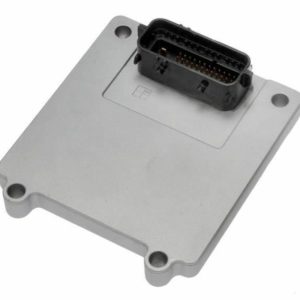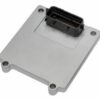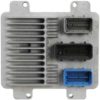Is Your Buick Rainier’s Transmission Acting Up?
If you’re experiencing unpredictable shifting, a check engine light that won’t go away, or your 2006-2007 Buick Rainier is stuck in limp mode, a failing Transmission Control Module (TCM) is the most likely culprit. As the electronic brain of your automatic transmission, the TCM’s health is critical for smooth operation, fuel economy, and overall drivability. When it fails, it can make your reliable SUV feel jerky and unsafe. This isn’t just an annoyance; it’s a problem that puts unnecessary stress on your transmission’s mechanical parts.
The Direct-Fit, No-Hassle Solution
This OEM-quality T42 Transmission Control Module is the definitive fix for these issues. The best part? It arrives at your door pre-programmed to your Rainier’s specific Vehicle Identification Number (VIN). This means you can skip the expensive trip to the dealership for programming. It’s a true plug-and-play solution designed to get you back on the road quickly and affordably.
A Real-World Scenario from My Shop
“Just last month, a 2007 Buick Rainier was towed in. The owner was frustrated—it was stuck in 3rd gear (limp mode) and had a P0700 code that kept coming back. He was worried he needed a full transmission rebuild. After a quick diagnostic scan confirmed communication errors with the TCM, we ordered this exact VIN-programmed module. Less than 30 minutes after it arrived, we had it installed. We cleared the codes, took it for a test drive, and it shifted perfectly—like it just rolled off the factory floor. It saved the customer over a thousand dollars compared to a dealer visit and unnecessary mechanical work.”
Symptoms of a Failing Buick Rainier TCM:
- ✔ Harsh, erratic, or delayed gear shifts that make driving uncomfortable.
- ✔ Vehicle suddenly entering “limp mode,” often stuck in a single gear.
- ✔ An illuminated Check Engine Light or Transmission Warning Light.
- ✔ Diagnostic Trouble Codes (DTCs) such as P0700, P0750, or other solenoid-related faults.
- ✔ Poor acceleration and a noticeable drop in fuel efficiency.
- ✔ Complete loss of communication with the module, preventing shifting.
Plug-and-Play Installation: No Dealer Visit Required
Installing your new 2006-2007 Rainier Transmission Module is a straightforward job for any DIY enthusiast or professional mechanic. You can have it done in under 30 minutes.
- Safety First: Disconnect the negative terminal from your vehicle’s battery to prevent electrical shorts.
- Locate the Module: On the 2006-2007 Rainier, the TCM is typically found in the engine compartment. Check near the air cleaner box or on the LH side of the engine bay.
- Swap the Part: Carefully unplug the wiring harness connectors and unbolt the old module. Secure the new module in its place and reconnect the harnesses firmly.
- Final Steps: Reconnect the battery. While the module is pre-programmed, it’s always good practice to use a basic OBD2 scan tool to clear any stored fault codes from the vehicle’s memory.
Frequently Asked Questions
- Q: What does “VIN Programmed” actually mean?
- A: It means we load your vehicle’s unique VIN and the latest GM software onto the module before we ship it. This ensures it communicates perfectly with your Rainier’s engine computer and other systems right out of the box, eliminating the need for dealer-only tools.
- Q: Is this a difficult part to diagnose?
- A: While symptoms like harsh shifting can have other causes, the combination of erratic shifting, limp mode, and a P0700 code points strongly to the TCM. It’s one of the most common failure points on these GM platforms.
- Q: Will this part number 24235754 fit other vehicles?
- A: Yes, this T42 TCM is compatible with a wide range of GM vehicles from roughly 2006-2014, including models like the Trailblazer, Envoy, Silverado, and Impala. It serves as a direct replacement for numerous part numbers, ensuring wide applicability.
- Q: Is there a core charge for my old part?
- A: No, there is no core charge. You can keep your old module or dispose of it at your convenience without the hassle of shipping it back.



